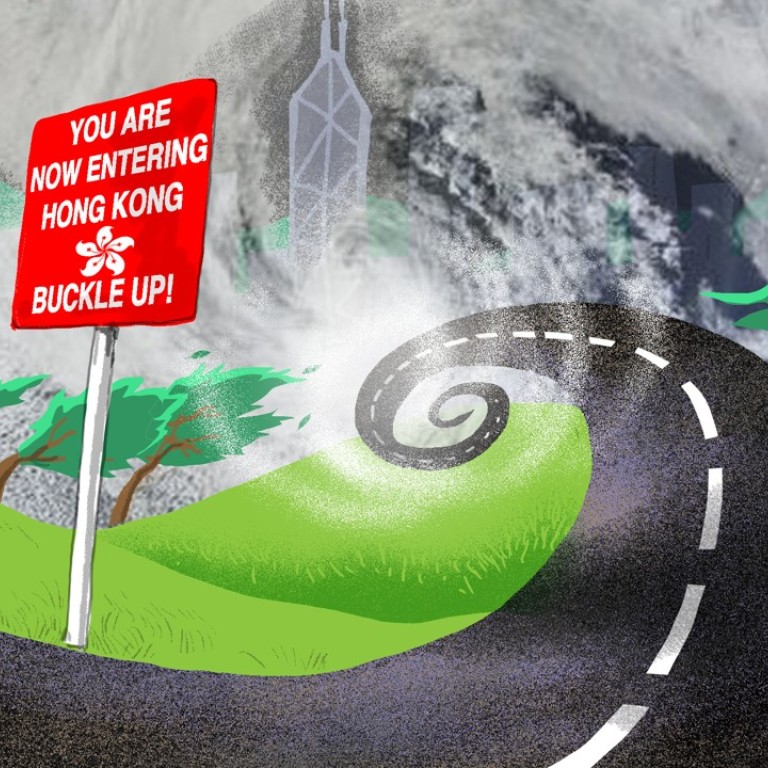
Typhoon Mangkhut’s message to Hong Kong: rethink reclamation and prepare for climate change seriously
Chandran Nair says the latest superstorm should be a wake-up call to the government on the need to plan for the long-term impact of climate change, such as rising sea levels, to which artificial islands would be the most vulnerable
The flooding in Hong Kong’s coastal areas should be a reminder that the city has not implemented any plans to deal with the effects of climate change. It has not built sea walls, nor changed building codes for coastal buildings to account for storm surges, nor protected critically vital utilities and infrastructure to withstand extreme weather.
But if storms as strong as Mangkhut become a regular occurrence, Hong Kong needs to be much more resilient in the face of extreme typhoons. It will happen again as night follows day: Hong Kong after all sits at the end of a “typhoon super highway” through the Philippines and Taiwan.
Yet Hong Kong’s government and legislators do not appear to be treating our ability to withstand the effects of climate change and extreme weather as our most important long-term policy concern. It does not feature in our city’s politics to any extent, despite the fact that both sides of the political divide likely agree, at least in principle, that climate change presents a threat to the city. It is unlikely that a debate will be had in the Legislative Council now, attended by all, to discuss the implications of what happened this week and what major adaptation polices need to be considered.
Watch: Typhoon Mangkhut devastates Hong Kong’s shores
It is well known that an artificial island in open seas would be even less resilient to the effects of extreme weather
Yet expanded reclamation makes more low-lying areas susceptible to flooding from storm surges. And if these reclamations are meant for large public housing projects, then the government is potentially putting thousands of people in these areas at risk of coastal flooding.
Yet the irony is that within the government, there are highly qualified professionals who have the scientific background and expertise to provide sound advice on the policies that are needed to adapt to a changing world. Sadly, they appear to have been ignored for political reasons. That in itself is a telling indicator of institutional capture by vested interests.
After all, it is well known that an artificial island in open seas would be even less resilient to the effects of extreme weather. How easy would it be for emergency services to reach the island if a typhoon causes a major crisis? How easily could people evacuate on short notice? How quickly would public transport recover?

Hong Kong needs a major rethink so that it is prepared for a very unpredictable future on the ‘typhoon superhighway’
Despite the increased costs and greater risk, the Hong Kong government is still pursuing land reclamation as the only possible option to solve the housing crisis, because the kind of short-term policy that ultimately affects no interest group is the only kind of policy that can make it through Hong Kong’s broken political process.
Over the next few days, Hong Kong’s excellent public services will clean up the debris from Typhoon Mangkhut. There may be some new systems implemented to prevent some of the disruption from the next storm that hits. But a city as densely-populated, as globally-important and yet as threatened as Hong Kong cannot afford to be reactive. It needs a major rethink so that it is prepared for a very unpredictable and precarious future on the “typhoon superhighway”. And that means more than asking residents to wear crash helmets and to fasten their seat belts.
More typhoons like Mangkhut can be expected as oceans get warmer, and they are likely to be more frequent and stronger than we ever imagined. And do not rule out a direct hit.
Chandran Nair is author of The Sustainable State: The Future of Government, Economy, and Society

